“Composition IS the masterpiece, lighting is the mood, technique is just the presentation” – Jim Harmer
Flying drones, and drone photography are alot of fun, and taking the world by storm. There is no doubt about it, it's great to take your drone out and just fly it. But we're Photographers, right? Our purpose for flying camera drones is not just for the love of flight, it's to create stunning and unique images. With the rise of consumer drones, bringing amazing technology at very reasonable prices (comparatively) aerial photography has never been more accessible. Using a drone in your photography can open up a whole new world to you and you can capture images that really stand out from the crowd. The perspectives that can be achieved with a drone means even the simplest scenes can offer great images.
But…..
To make great images, it's not just about having a unique perspective or a different vantage point. You also need to create a great composition. This is no truer in the air as it is on the ground. There are a number of resources available to help you hone your compositions in photography and all are applicable to all photography. Improve Photography has a great video tutorial on Block Method Composition that can really help improve your eye for a great composition and in turn improve your photography. Drone photographers often fall into the trap of shooting anything and everything when they first start this form of photography. This article intends to help you avoid these mistakes and use improved compositions to improve your drone photography.
The rules and lessons learnt in photography compositions apply as much in the air as they do on the ground, but they are often more difficult to achieve at times. For instance, good luck finding a foreground interest at 120 metres up. Unless you are doing something very silly and illegal, foreground interests just do not exist in the sky (don't go chasing that Boeing 747 down the runway). So how can we get great images from drone photography and what are the things we should be working on and looking out for?
1. Look for Patterns
From the air, the world can look very ordered and patterns begin to emerge. There are patterns everywhere if you just keep a keen eye out for them. They can be patterns in the trees, or in fields or made by roads and paths. Try to hone in on these patterns. Patterns work great in drone photography, as they do in more conventional photography. From the air, great patterns in colour can also show up with shades of colour being more prominent. Look to compose your image taking into account the patterns around.
When working with patterns, what works on the ground can work equally well in the air. Look for breaks in the pattern for an even more compelling image. On the ground, this takes the form of a pattern in windows in a building but in one of the windows, there may be a person. In the air, this could be patterns of trees broken up by a building or an expanse of water.
Make sure you think how to use patterns in shape and colour to make your image stand out from the crowd.
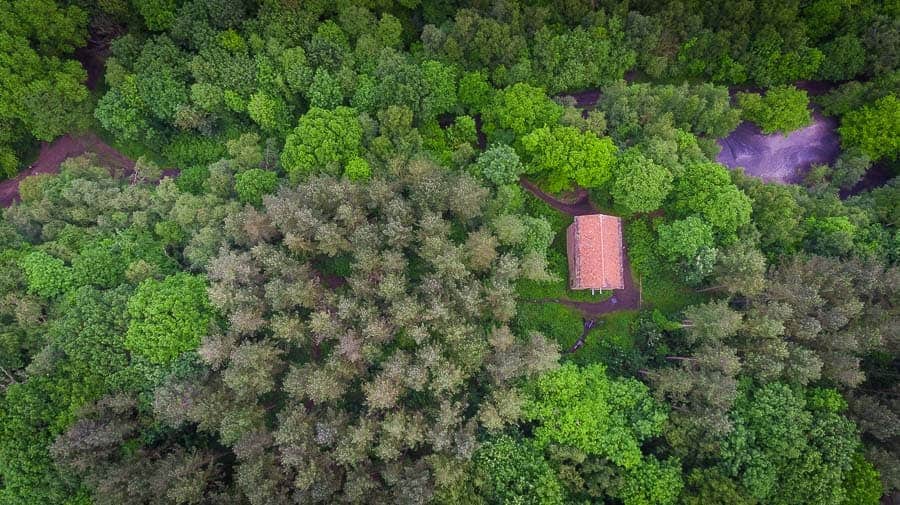
2. Shapes
As with patterns, shapes can play an important part of drone photography. From the air, shapes can reveal themselves in unlikely places. A tree line, that was uninteresting from the ground, can create great shapes in your image. A lake from above can provide interesting shape when surrounded by contrasting colour or texture. You can show the different shapes of buildings from above that may not be so obvious on the ground. Look for strong shapes in your compositions. Triangles are always great shapes to incorporate into photographs and this is no truer than from the air. So try to look at your image more abstractly and spot this shapes that naturally appear or create these shapes with your compositions.
3. Simplify
As with ground level photography, making a composition simple can really enhance the photo. This enables the viewer to really understand what the subject of the image is without searching around a busy frame. Simplifying does not necessarily mean removing things from the image. From the air, a forest can look like a simple blanket backdrop for your image. Things tend to become simpler the further up you go (within the legal limits obviously). A lot of the distracting elements may simply be too small to see from the air which makes you view the scene from a macro level. Roads become lines and patterns. Housing estates can become the simple backdrop of slightly different shades of similar colour. A strong focal element nestled between these simpler compositions can make for a really strong image. Unfortunately, with the wide angle of view of most, if not all drone cameras, and the relatively large distances between the drone and the subject, background blur (bokeh) is not an option for simplifying your image so you will have to think a little more creatively in these instances but you can use simplifications to your advantage.
4. Don't forget the rules – leading lines, the rule of thirds etc.
When in the air it is easy to forget the basics of photography. The ‘rules' still apply when in the air. Make sure you keep an eye on the rule of thirds, leading lines, golden ration etc. Improve Photography has a great video on Block Method Composition and mamanyther articles on compositional rules for you to get the basics if you are not familiar with these techniques. This framework should also be observed when taking photos by drone.
In some respects, it is much easier to spot simple shapes in the image from high, when attempting to ‘block' the composition (I suggest you watch the tutorial for the context here, trust me you will not regret it). Leading lines can be much more prominent from above and can really act to draw the viewer into the image.
Using these rules can make simple scenes into quite interesting compositions and can really set the starting point for improving you drone photography.
As with photography on the ground, these rules do not always have to be followed, and often the most interesting compositions deliberately break these rules but make sure you keep them in your mind when framing and composing your next drone shot.
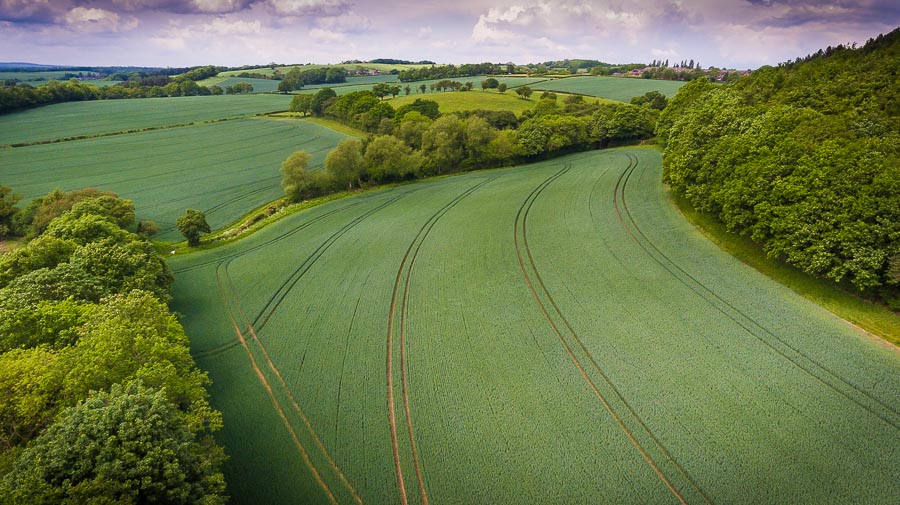
5. Go for a different view
Drones give you the great advantage of being able to go to places that would otherwise be impossible. This means you can take photos and achieve compositions that would have been really difficult, if not impossible, to achieve in the past. We are at a stage of photography where the world can be explored all over again, now with a completely different view; lucky us I say. The altitude that you can fly your drone obviously gives you greater, and more unique, vantage points on scenes than ever before. Even highly photographed scenes can now take on a completely different direction than before. Use this to create unique, never before seen, compositions.
However, don't stop there. Just because you can fly your drone high and take pictures from great altitudes it doesn't mean that's the only way to take photos with a unique view. Some of the best drone photographs I have seen were taken at very low altitude but were taken from places inaccessible without a drone.
The photo below was taken by Jim Harmer in Ireland during an Improve Photography meetup. This was taken with the drone hovering low over the ocean looking back at the shore. This would have been an impossible shot a short few years ago without chartering a helicopter and would have been too dangerous a spot to try to approach by boat due to the rough seas and jagged rocks.This is a great example of creating a unique composition without relying on altitude.
This is a great example of creating a unique composition without relying on altitude.
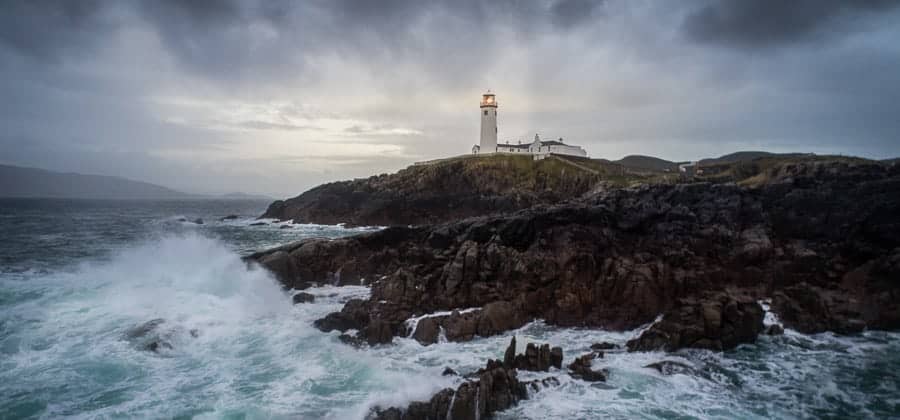
It's not only about the height you fly your drone from the ground. With your drone, you can also get really close to subjects to create a completely different view entirely. Or go far away, shooting a wide open scene and capturing the subject in its expansive environment. The opportunities are endless with drone photography so get out there and find a ‘never before shot' composition.
6. Be brave & take risks for unique compositions
Only the brave with prevail!! Great compositions with the drone often put the drone at the most risk. Shooting low over the ocean does come with danger as it will only take one rogue wave to end it all. The ocean is unpredictable which is what makes it most interesting. Without being brave some of these shots would never happen. Your level of bravery with your drone will come down to your flying experience and skills, your financial situation (how valuable is your drone to you) and your attitude and desire for the shot. It is a personal choice of how much danger you put your drone in but that choice will limit the compositions and the dramatic photos you can achieve. My advice, do it. It's only a drone (but mine is safely tucked away at the moment).
7. Take advantage of lighting, highlights and shadows
As with any great photography, the light is a key ingredient for stunning images. This is no different in drone photography. In fact, light can be used to your advantage even further to create unique images when using a drone. Shooting at a preferential time of day when the sun is low in the sky can create long shadows of objects that can look striking from above. A tree line can create long shadows on the ground which can add dimension into your image as well as acting as leading lines or even foreground interest if composed carefully
There is a famous image of camels in the desert shot from a satellite (Google it). The shadow being cast by the camels looks like the animals themselves and you have to take a second look in order to figure out what it actually happening. This is a great example of using shadows and lighting to create good compositions with drone photography (although this particular example was a fluke taken by a passing satellite but still). Use lighting and shadows to create contrast through the image that is compelling to the viewer.
8. Slow shutter magic
Drones are remarkably stable in the air and on still days are capable of shooting long exposures. This opens up a whole world of drone photography such as motion blur, silky smooth water and light trails. Make sure you remember this functionality exists in the drone because, as with ground level photography, slowing the shutter down can often result in much more dramatic and appealing compositions; but don't overdo it. So strap on your ND filters and give this a whirl.
9. Don't forget the people
Taking good photos of people with a drone is difficult. It's definitely not an ideal piece of equipment for portraits but that doesn't mean you should avoid putting people in your photos. There have been many professional photographers employing their drone to take group photos at weddings with striking results. In landscape drone photography, people can add a sense of scale to the image as well as adding a human factor into the story of the photo by including a person or a number of people. Now, before you go off and fly your drone over groups of people, be sure you understand the law and your responsibility to keep people safe (I am not qualified to advise on this matter but please be warned). That being said, there are still many ways of safely and legally including people into your compositions.
Now, before you go off and fly your drone over groups of people, be sure you understand the law and your responsibility to keep people safe (I am not qualified to advise on this matter but please be warned). That being said, there are still many ways of safely and legally including people into your compositions.
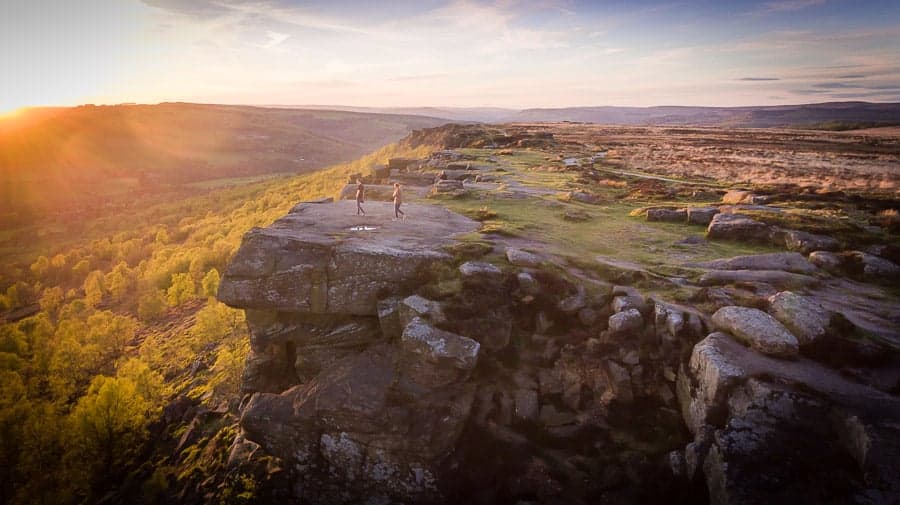
10. Location, Location, Location
We have discussed the number of things you can do to improve your drone photography compositions and ways of viewing the world using the drone to create unique looks of familiar surroundings but location plays a huge part in determining whether you have an appealing photo. Great locations are everywhere and not always obvious (check out the Really Good Photo Spots app to help you out here). These spots could be places with particularly interesting architecture, or it could be something more natural. Striking subjects, such as castles surrounded by a forest of trees can look particularly stunning from the air but make sure you stay within the rules of the location which will vary wildly from place to place.
Locations with strong subject elements in expansive grounds and landscapes offer a lot of potential to drone photographers in which the subject can be set within stunning surroundings to really help the composition of the photograph. Great photos can be made from mundane scenes but a great location will always help and that is no different in drone photography.
Improve your compositions
Drone photography can offer a completely new look at photography and can really excite and refresh our passions. Stunning images can be created using this form of photography and many have succeeded at creating breathtaking work. If your drone images are leaving you a bit flat and disappointed, try some of the composition tips in this article and let me know how they improve your drone photography.
If you have any other tips for composition for drone photography, I would love to hear about them as I too am an avid drone photography enthusiast and I too am always looking to improve my drone photography. Join the conversation at Improve Photography.

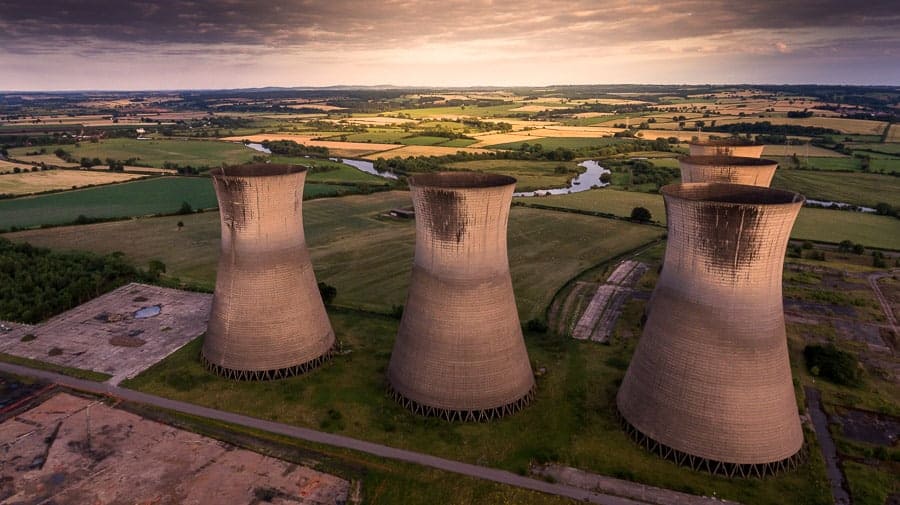
I appreciate you providing some tips on how to create drone photography compositions such as looking for patterns from the air. Looking down, you may want to carefully observe and see for any patterns, whether in shape, size or color, that you can use as a theme for your drone composition. It could either be the trees or the bunch of houses in a nearby neighborhood. Bottomline is, the better you are able to create the pattern, the more it would stand out in front of your audience. If I were to do some drone photography, I would make sure to keep this in mind. Thanks.
Nice very great, thanks a lot it really helped me understand.